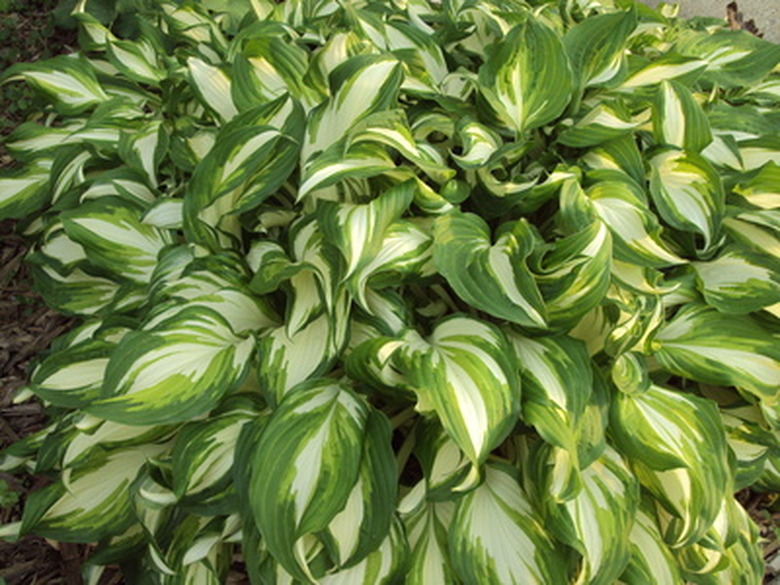Do Hostas Need To Be Cut Down?
Hostas grow well in shady areas of the garden, providing color and interest to spots where few other plants thrive. Most hostas are grown for their foliage though some also flower attractively. Hostas require only minimal maintenance, but at times pruning and cutting them down improves their health and appearance.
Tools
Pruning shears or even sharp clean scissors easily handle most of the cutting needs on a hosta. Use a rake for cleaning up after a trim, particularly during the fall when the plant is dropping its leaves. Clean tools prior to use to prevent the spread of disease or insects to healthy plants. Wash the tools in a solution of 1 part bleach to 9 parts water, as this dilute bleach solution kills disease organisms and insect eggs.
- Hostas grow well in shady areas of the garden, providing color and interest to spots where few other plants thrive.
- Hostas require only minimal maintenance, but at times pruning and cutting them down improves their health and appearance.
Deadheading
The removal of flower stalks, called deadheading, can be done before or after flowering depending on your personal preference. If you grow hostas for their foliage or have a variety with small, inconsequential flowers, remove the flower stalk as soon as it begins to form. If you prefer the flowers, wait until after the flower has bloomed and cut it once it begins to wilt. Cut out the stalk where it emerges from the main part of the plant.
Maintenance Pruning
Hostas rarely require maintenance pruning unless some damage has occurred. Cut out or pull off leaves as they naturally yellow and die throughout the summer. If drought or disease has caused the leaf tips to brown, cut the damaged leaves back to their base. Hostas maintain a full, rounded shape naturally so there is no need to cut the hosta into a more attractive form.
- The removal of flower stalks, called deadheading, can be done before or after flowering depending on your personal preference.
- If you grow hostas for their foliage or have a variety with small, inconsequential flowers, remove the flower stalk as soon as it begins to form.
Fall Cleanup
Most hostas die back and go dormant over the winter. Leaf dieback usually occurs after the first frost in fall. Cut off the leaves as they die or pull them off by hand. Leave the foliage that's still green in place until it dies off completely, as this foliage is still collecting nutrients for the root system. Once most of the foliage has been removed or fallen off on its own, rake it up and compost it. Leaving the dead foliage in the bed provides winter nesting materials for unwanted pests.
